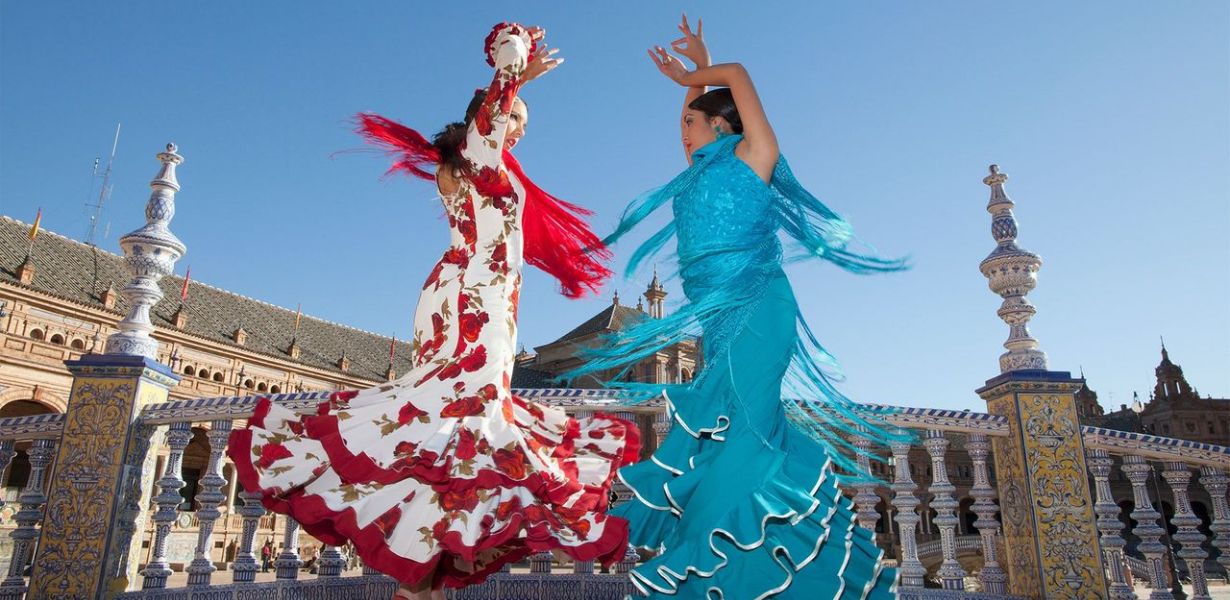
Flamenco is more than just a dance or music genre; it’s a profound expression of Spanish culture that has transcended borders and captivated hearts worldwide. Rooted in the rich history of Andalusia, a region known for its vibrant traditions, flamenco encapsulates the soul of Spain like no other art form.
Origins and Evolution
Tracing its origins back to the diverse cultural influences of Andalusia, flamenco has evolved over centuries. It emerged as a fusion of Romani, Moorish, and Spanish cultures, each contributing unique elements that have woven together to create the flamenco we know today. The music, dance, and lyrics all reflect the struggles, joys, and triumphs of the people, making it a genuine expression of human emotion.
The Three Pillars: Music, Dance, and Singing
Flamenco is a harmonious symphony of three essential components: music, dance, and singing. Each pillar is intricately linked, creating a captivating performance that tells a story. The haunting melodies of the guitar, the rhythmic footwork of the dancer, and the heartfelt vocals merge into an unforgettable experience that leaves audiences mesmerized.
Flamenco Music: The Guitar’s Melancholic Notes
At the heart of flamenco music lies the Spanish guitar, an instrument that pours its soul into every strum. With its intricate melodies and evocative chords, the guitar sets the emotional tone of the performance. It carries the weight of history and passion, conveying feelings that words alone cannot express.
The Dance of Passion
Flamenco dance, a mesmerizing display of rhythm and movement, is a language of its own. Dancers communicate through intricate footwork, intricate hand gestures, and graceful postures. The emotions conveyed range from sorrow and longing to exuberance and celebration, painting a vivid picture of the human experience.
Lyrics that Tell Tales
Flamenco singing, or “cante,” is the voice of the soul laid bare. The lyrics delve into profound themes of love, loss, hardship, and hope. The singers, or “cantaores,” infuse their performances with raw emotion, channeling their experiences and connecting with listeners on a profound level.
Flamenco’s Cultural Significance
Flamenco isn’t just an artistic expression; it’s a reflection of Spain’s history, society, and identity. It has weathered political upheavals, social changes, and artistic innovations, remaining an unyielding symbol of Spanish heritage. Its inclusion in UNESCO’s Intangible Cultural Heritage list further underscores its significance.
Global Impact and Modern Adaptations
While deeply rooted in tradition, flamenco has also embraced modern influences. Contemporary artists have fused flamenco with other genres, creating innovative blends that appeal to diverse audiences. This adaptability has enabled flamenco to maintain its relevance and allure in a rapidly changing world.
Preserving the Art: Flamenco Academies and Festivals
Flamenco’s legacy is upheld by dedicated artists and institutions worldwide. Flamenco academies provide formal training to aspiring dancers, musicians, and singers, ensuring the art form’s continuity. Vibrant festivals, such as the Feria de Abril in Seville, bring together enthusiasts to celebrate and share the joy of flamenco.
Final Words
Immerse yourself in the intricate tapestry of Spanish flamenco, where every note, step, and word resonates with the essence of human emotions. From its humble origins to its global influence, flamenco continues to captivate hearts, bridging the past with the present in a harmonious dance of culture.
Commonly Asked Questions
Q1. What makes flamenco unique among other dance forms?
Flamenco’s uniqueness lies in its fusion of music, dance, and singing, all expressing a wide range of emotions. Its ability to convey profound stories through its various components sets it apart from other dance forms.
Q2. Is flamenco only popular in Spain?
No, flamenco’s allure has transcended borders. It’s cherished worldwide and has influenced various musical and dance genres globally.
Q3. Are there different styles of flamenco?
Yes, there are multiple styles, known as “palos,” each with its own rhythm, melody, and emotion. Some examples include “soleá,” “alegrías,” and “bulerías.”
Q4. Can anyone learn flamenco dancing or singing?
Absolutely! Flamenco academies and workshops welcome enthusiasts of all levels, offering training to help individuals learn the intricate techniques and expressions of the art form.
Q5. How has flamenco influenced contemporary music?
Flamenco’s passionate rhythms and melodies have inspired musicians across genres, leading to unique blends with jazz, pop, and even electronic music, enriching the global musical landscape.





